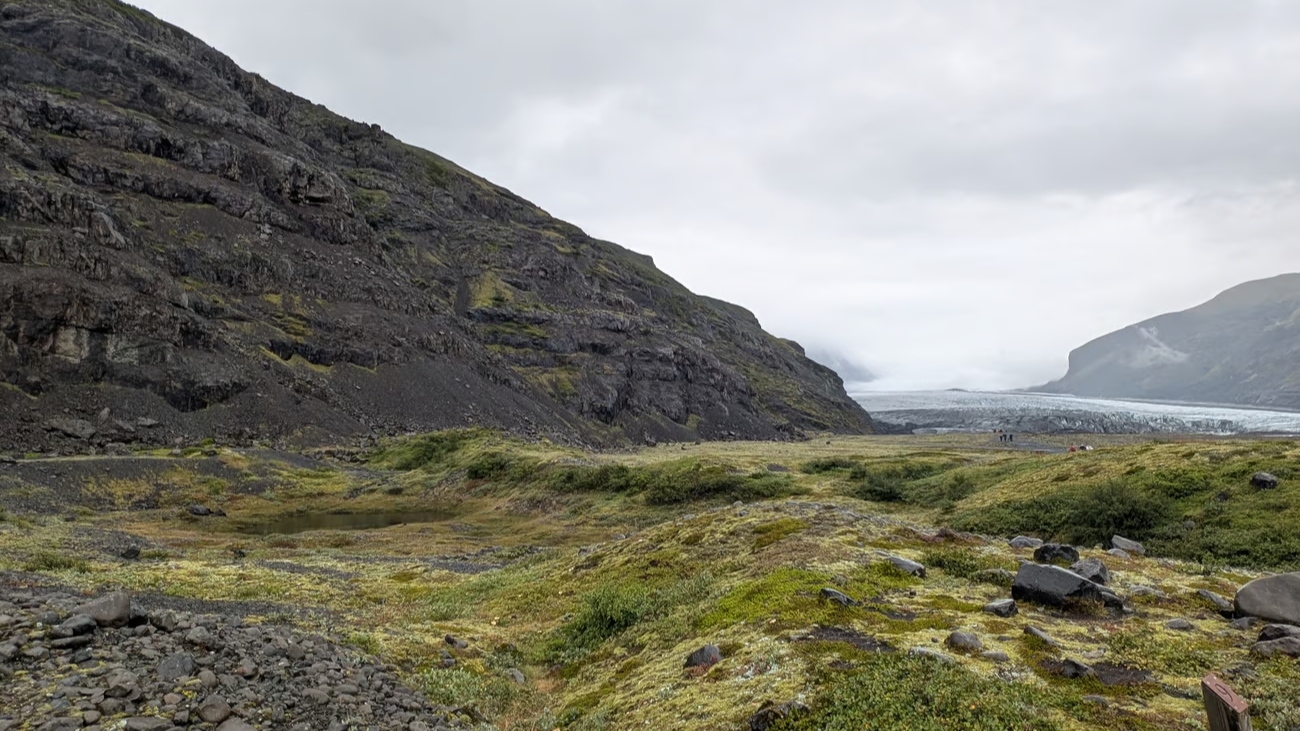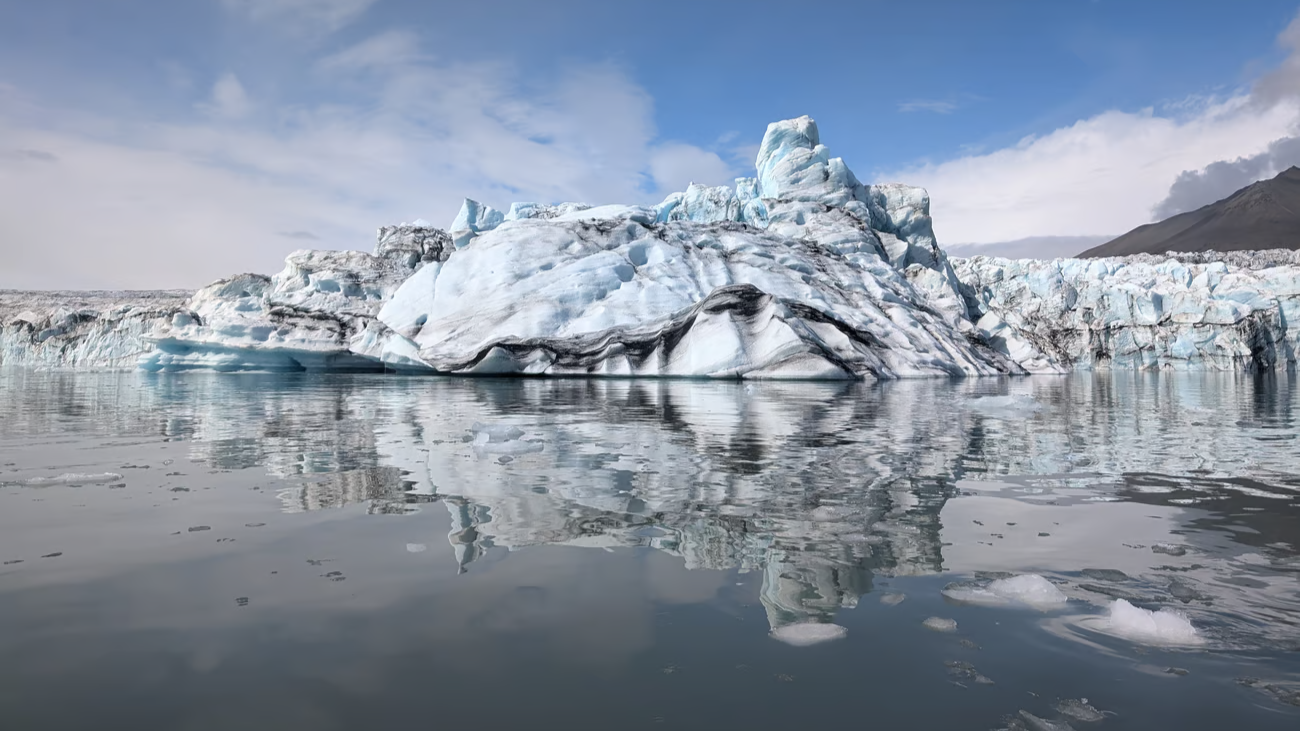I was very lucky to travel last week to what instantly became one of the most fascinating and beautiful places I’ve ever seen: Iceland.
My family spent several days road tripping along the island’s south coast, stopping at volcanic craters, cliffs full of puffins, black pebble beaches, hot springs and waterfalls in a green moonscape dotted with sheep. All this, and glaciers — ice-capped volcanoes and ice-covered mountainsides, melting toward the sea.
The parking lot at the Icelandic glacier called Sólheimajökull was said to be entirely covered by ice about 120 years ago. When we pulled up, we walked 10 or 15 minutes along a muddy glacial lake to the glacier’s current “snout.” Ice had receded from that entire distance in only a few generations.
At Jökulsárlón, we took a Zodiac across the frigid meltwater, dodging blue icebergs freshly calved off the glacier known as Breiðamerkurjökull.
A half-asleep harbor seal eyed us from a small ice floe. We slowed in front of the jagged front edge of the glacier, striped with black layers of volcanic ash. Echoing creaks, cracks and an occasional splash hinted at more ice breaking and falling.
The country’s main ring road crosses Jökulsárlón where it turns from lagoon into tidal inlet. A submerged barrier, meant to keep larger bergs from smashing into the highway, has needed perennial repairs. As the glacier retreats, the lagoon will eventually become a fjord.
‘Faster than a political cycle’
Seasonal ice melt is natural, as is the cyclical ebb and flow of glaciers across thousands and millions of years. What’s not so natural is the pace at which it is happening now, according to renowned glaciologist Paul Mayewski, who directs the University of Maine’s Climate Change Institute.
“Greenhouse gasses increased over the last few decades by 50 percent more than it had ever been in the rest of the last million years, and 100 times faster,” he told me this week. “All of a sudden, because of our emissions, this whole thing was really fast forwarded.”
And some of the resulting changes happen alarmingly fast. Mayewski sees the period of 2007 to 2012, during which Arctic warming spiked, as “the first abrupt climate change of the modern era.”
Mayewski led the team that discovered the possibility of abrupt climate changes in the 1990s (loosely inspiring what I know you will be shocked to learn is one of my favorite movies, The Day After Tomorrow). They found evidence of these shifts in an ice core from the 10,000-foot-high summit of Greenland’s ice sheet, containing layers of preserved chemical signals dating back 100,000 years.
Over the millennia, these abrupt changes — which can happen “faster than a political cycle” and certainly within a matter of decades, he said — have at times coincided with the fall of empires.
There’s complex science behind how this happens. For purposes of current ice-melt trends, one crux is that glaciers are made of fresh water, which thins the salty seas as it melts into them. Less dense water doesn’t sink the way it should, slowing the flow of warmer surface water across the Atlantic.
This affects the weather in the short term while leaving longer-term marks on the oceans: more melting of sea ice, warmer lands and waters at the edges of glaciers, and more melting of the glaciers in turn. This causes rising seas and myriad other effects. Mayewski said one change that has arrived in force in Maine, thanks to our especially fast-warming ocean, is worsening coastal storms.
An abrupt climatic shift — perhaps caused by the collapse of an ice sheet or a pulse of methane from thawing permafrost — might appear in hindsight as a climate tipping point.
This will not look like The Day After Tomorrow. It will be protracted and diffuse, even if only spread over a matter of a few years. It will likely manifest in massive droughts, fires and floods that lead to unprecedented mass migration and increased instability and struggle across the world.
“If you suddenly tell people that 10 years from now, the tipping point occurs and we’re toast, nobody’s going to do anything,” Mayewski said.
Instead, he frames it this way: “These things will occur. They can be moderated dramatically by our behavior, but we also need to be prepared for them, and we need to be planning.”
Exchange and empathy
Eco-tourism, like what I did in Iceland last week, of course has serious environmental impacts of its own. The air travel industry, if it were a country, would be the world’s sixth-biggest emitter.
There was an acute irony in staring down the visible signs of rapid human-caused climate change from amid a carbon-fueled throng of tourists, even in the most renewable-powered nation on Earth.

But Mayewski said he’s all for eco-tourism done responsibly. It shows people the power and scale of these changes firsthand, he said, and that helps their family and friends appreciate it too.
I watched this happen for my mom in Iceland: As she realized just how quickly those glaciers were melting and understood humans’ effect on that speed, she was horrified. She’s already very climate conscious, and yet the firsthand experience of something so clear-cut made a harsh impression.
“It’s critical for people to think beyond their own small borders and worlds,” Mayewski said. “The more exchange we have — the more we can empathize with situations which we are fortunate enough not to experience — the better off we are.”







